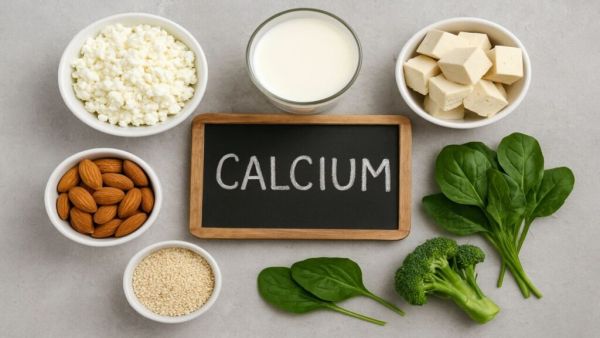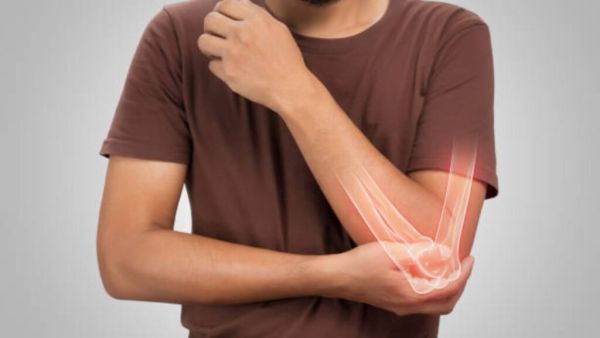
Calcium deficiency, or hypocalcemia, can affect nearly every part of your body. If left untreated, it can lead to severe long-term health issues. Recognizing the signs early is key to managing it effectively.
5 Major Symptoms of Calcium Deficiency
The symptoms often start subtly but can progress to more severe conditions if your calcium levels remain low.
- Muscle Problems (Cramping and Spasms): This is one of the most common early indicators. Low calcium levels can lead to muscle aches, pain, cramps (especially in the thighs and arms during movement), and spasms. Severe deficiency can cause tetany, which involves involuntary twitching and seizure-like muscle contractions.
- Paresthesia (Numbness and Tingling): Low calcium disrupts nerve signals. You may experience tingling or numbness primarily in the fingers, hands, feet, and around the mouth.
- Extreme Fatigue and Lethargy: A calcium deficit can drain your energy, causing persistent fatigue, sluggishness, and overall lethargy, even when you’ve had enough sleep. It can also lead to insomnia or difficulty falling asleep.
- Brittle Nails and Dry Skin/Hair: Calcium is vital for cell maintenance. A deficiency often manifests externally as brittle, easily broken nails, rough and dry skin, and coarse hair, sometimes leading to hair loss (alopecia).
- Dental and Bone Issues (Long-Term): This is the most well-known effect. Over time, the body draws calcium from the skeleton to maintain critical functions elsewhere. This process weakens bones, leading to osteopenia and eventually osteoporosis (porous, brittle bones that are prone to fracture). In children, it can cause poor growth and rickets.
Resolve the Deficiency with These Things
Correcting a calcium deficiency involves a combination of dietary adjustments and ensuring adequate absorption.
1. Calcium-Rich Foods (The Best Sources)
Focus on incorporating these calcium powerhouses into your daily meals:
- Dairy Products: Milk, yogurt (especially Greek yogurt), and hard cheeses like Parmesan and Cheddar are highly bioavailable sources.
- Dark Leafy Greens: Kale, Collard Greens, and Bok Choy are excellent sources. Note: While spinach has calcium, its absorption is hindered by high levels of oxalic acid.
- Fortified Foods: Many cereals, breads, soy milk, almond milk, and orange juices are fortified with calcium. Always check the nutrition label.
- Fish with Edible Bones: Canned Sardines and Canned Salmon are exceptional sources because you consume the soft, calcium-rich bones.
- Other Sources: Tofu (calcium-set), white beans, and almonds.
2. The Crucial Partner: Vitamin D
You can eat all the calcium in the world, but your body cannot properly absorb it without Vitamin D. Think of Vitamin D as the key that unlocks the door for calcium to enter your bloodstream.
- Sunlight Exposure: The most natural source is sun exposure (10-30 minutes several times a week).
- Dietary Sources: Fatty fish (salmon, tuna), fish liver oils, and fortified milk/cereals.
3. Supplements (Consult a Doctor)
If diet alone isn’t enough, your doctor may recommend supplements.
- Calcium Carbonate: This is the most common and inexpensive form, but it must be taken with food for best absorption.
- Calcium Citrate: This form is more easily absorbed and can be taken with or without food, making it suitable for those with absorption issues or low stomach acid.
Important Note: Do not start high-dose calcium or Vitamin D supplementation without first consulting a healthcare professional. Too much calcium can lead to other issues like kidney stones or hypercalcemia.
-
If you want to look most beautiful and stylish in the office Diwali party, then follow these 5 fashion tips which will make you look different.

-
Calcium deficience: Why is women growing in women? Don’t miss out on the ‘these’ symptoms that appear in the body

-
Vivo TWS 5: Light, strong and stylish… Launch new earbuds of Vivo with 48 hours of battery backup and super sound quality

-
Preparations to stop digital fraud immediately… RBI is launching a new banking platform equipped with AI

-
Khalid Jamil’s Emphasis On Teamwork For Success In India vs Singapore, AFC Asian Cup 2027 Qualifiers
